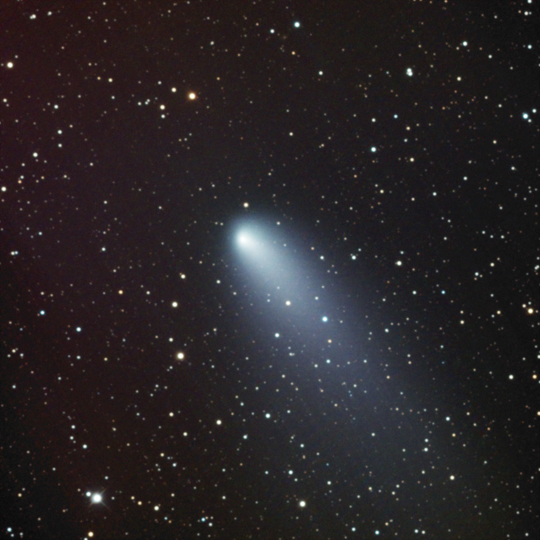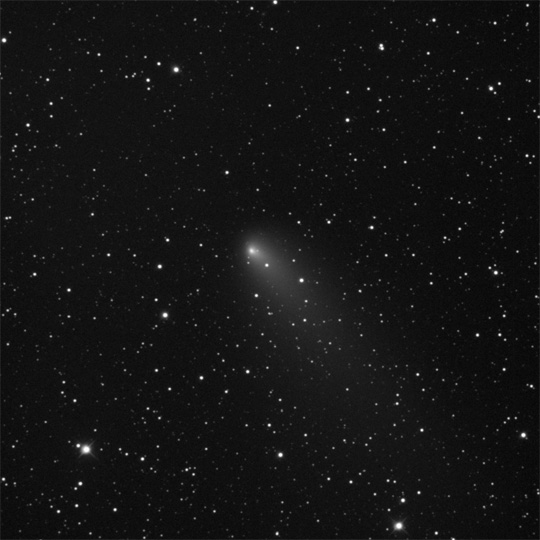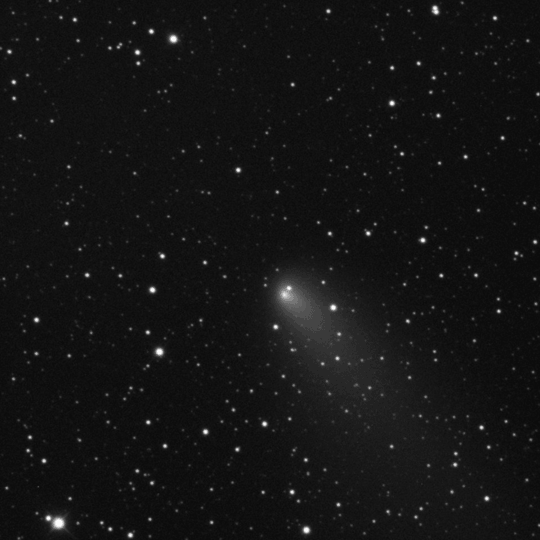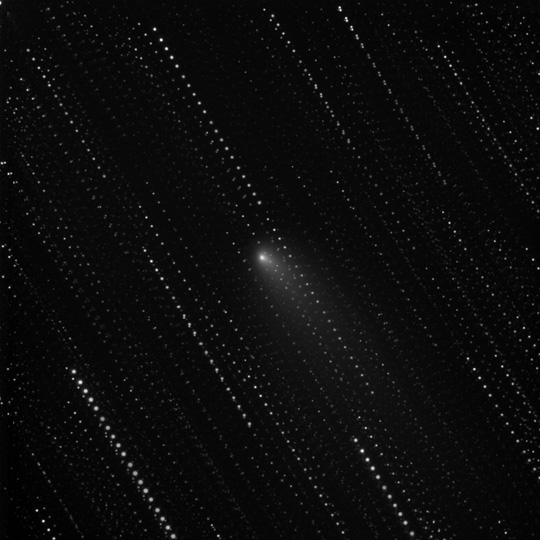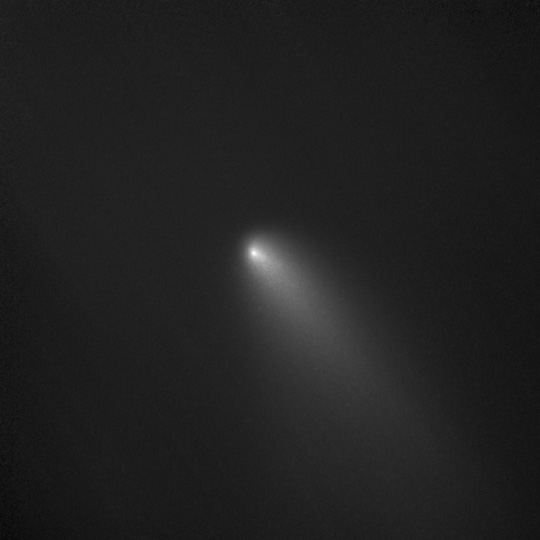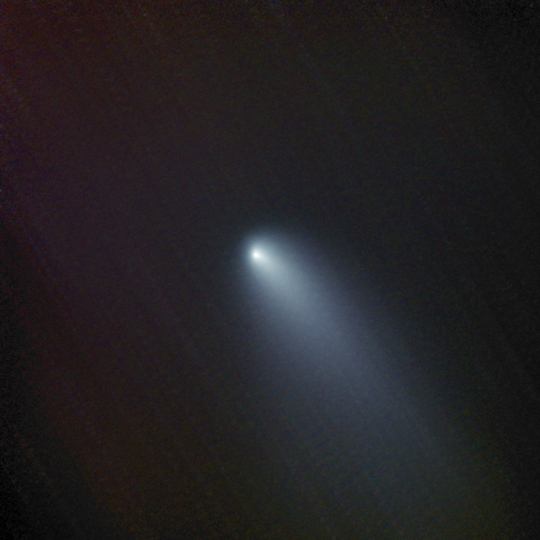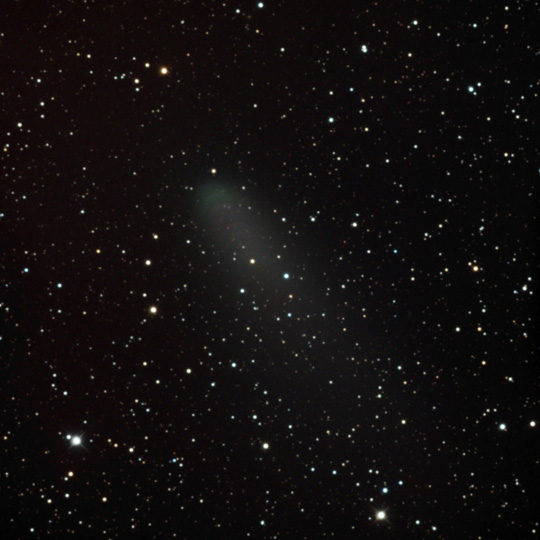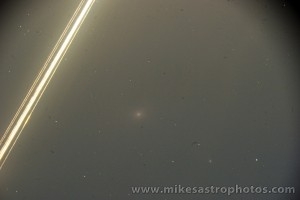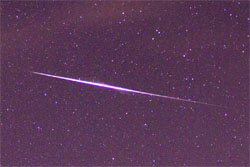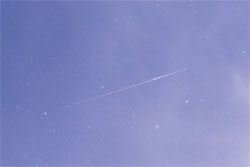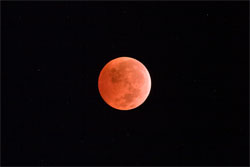Comet C/2012 K5 LINEAR – Redux
by Mike Hankey, under Comets & Meteors
I bought my first telescope before the new year of 2009 and took my first astrophoto on Jan 7th, of that year, literally 4 years ago today. The inspiration that compelled me to buy that telescope, look up at the sky and document what I saw is still going strong four years later and it kept me up until dawn last night imaging comet K5 Linear! This comet was discovered in May of 2012, went around the Sun in November and just past Earth a few days ago on December 31th missing us by a mere 28 million miles. Yesterday, January 6th was the feast of the Epiphany, a Christian Holiday celebrating the revelation that God was born as a human being in Jesus Christ. Many scholars hypothizize that the star that led the magi to Bethlehem to celebrate this revelation could have been a comet. For me astronomy, has been a great Epiphany and the joy that comes from learning about the Universe is all powerful and never ending. Peace to you in 2013!
Here is a brief tutorial on how to image comets.
Imaging comets is a little tricky because they are moving pretty quickly and you have to take short exposures or else the comet will streak through the picture. You can track the comet, but then the stars in the picture will streak. There are additional challenges when trying to get a color photo because by the time you cycle through the red, green, blue and luminance filters the comet has moved significantly enough to cause alignment issues within itself (not to mention the stars). Over time, I have learned a few tricks about imaging comets that I will explain here.
First, here’s the trick — to get your final nice comet image you need to be able to stack on just the comet in one picture while washing out all of the stars and then with another picture, you stack on the stars and wash out the comet. Once this is done you combine the two images into the final product. If you’re doing this for color, then its the same process you just have to do it 4 different times (once for each color channel RGB plus the clear Luminance filter). Now here’s the trick, in order to wash out the stars and the comet, there needs to be sufficient space in between the stars and objects in all frames — the stars can not overlap. In order to run the error suppression routines, the stars must have spaces in between them.
Here’s an example of a single 60 second exposure using the Luminance filter. We will need 20 of these before the final luminance channel can be completed.
Knowing that we need to space out the exposures to allow the comet to move enough so that the stars don’t overlap in-between frames, the most efficient way to acquire the data is setting up a loop that switches filters in-between each exposure, for example: Red, Green, Blue, Lum, Dark, Pause, Loop x 20). I throw the dark in there because we will need to calibrate the pictures and this is a nice way to use some time and space it out a little more. The pause time may not be needed or it can be whatever is necessary to space out the comet in between frames. If you setup the acquisition routine like this with a 10 second pause there will be at least 5 minutes before each filter repeats.
Here’s an animation of 7 60 second luminance frames, each spaced out over 10 minutes, so this is 70 minutes of comet flight time. (If the image below is not moving, please give it a minute to load.)
Now once we have collected our data if we were to align the frames centering on the comet itself and then stack without error reduction the image would look like this (note the spaces in-between the stars).
Using poison sigma error correction we can then wash out all of the stars during the stacking process. Poison sigma will essentially delete anything that is not the same between two frames, so if the stars are not touching they will be deleted.
Once we have done this for all of our frames (Red, Green, Blue, Lum) we combine them to make the color image of the comet.
We can then re-align the frames on the stars and use the poison sigma error reduction to wash out the comet.
Now that we have our two color master frames, we can line them up together as layers in photoshop. Put the comet on top and then change the layer type to Luminosity and wa-la! The final comet image is ready! It took 80 pictures exposed for 60 seconds each to create this final image.
Photo Details
Comet 2012/K5 (Linear)
20×60 Seconds of LRGB Binned X 3
Total exposure: 1 hour 20 minutes
Camera: Apogee U16M
Guider: SBIG 402 with MMOAG Off Axis Guider
Telescope: RCOS 14.5
Mount: Paramount ME
Location: Auberry, CA
Date: 1/7/2013
Software: The SkyX, MaximDL, FocusMax, CCDStack, Photoshop
